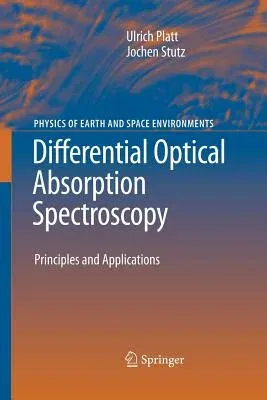Ulrich Platt
(Author)Differential Optical Absorption Spectroscopy: Principles and Applications (2008)Paperback - 2008, 6 June 2008

Qty
1
Turbo
Ships in 2 - 3 days
In Stock
Free Delivery
Cash on Delivery
15 Days
Free Returns
Secure Checkout

Part of Series
Physics of Earth and Space Environments
Print Length
598 pages
Language
English
Publisher
Springer
Date Published
6 Jun 2008
ISBN-10
3540211934
ISBN-13
9783540211938
Description
Product Details
Authors:
Book Edition:
2008
Book Format:
Paperback
Country of Origin:
NL
Date Published:
6 June 2008
Dimensions:
23.88 x
16.51 x
4.32 cm
ISBN-10:
3540211934
ISBN-13:
9783540211938
Language:
English
Location:
Berlin, Heidelberg
Pages:
598
Publisher:
Weight:
1179.34 gm